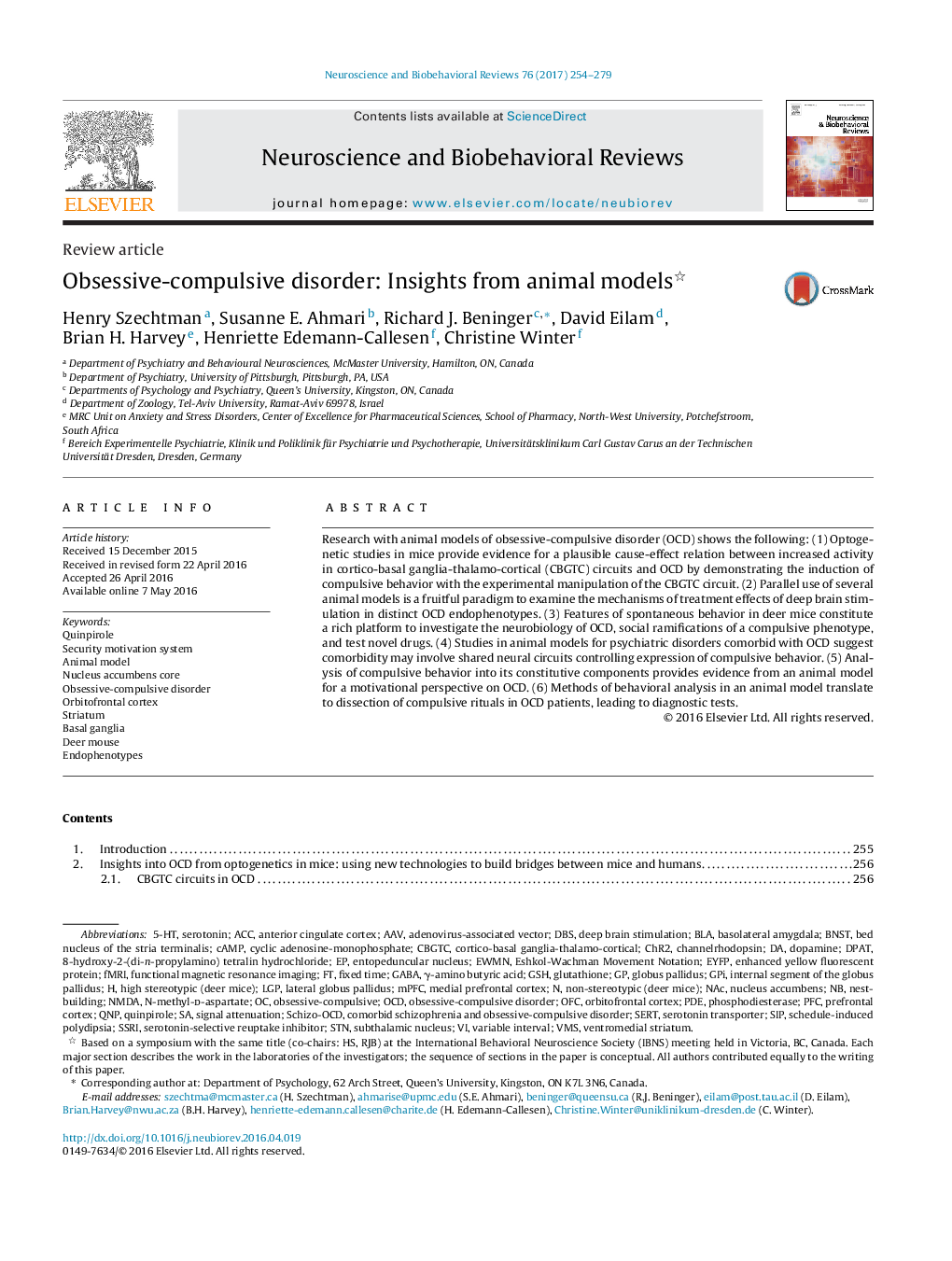| Article ID | Journal | Published Year | Pages | File Type |
|---|---|---|---|---|
| 5043718 | Neuroscience & Biobehavioral Reviews | 2017 | 26 Pages |
â¢Utility of animal models in research on OCD is considered and insights gained reviewed.â¢Optogenetic studies in mice demonstrate that hyperactivity in CBGTC circuits can result in compulsive behavior.â¢Parallel use of several animal models indicates DBS targets may depend on specific OCD endophenotypes.â¢Mechanisms of compulsive behavior are revealed by considering spontaneous behavior in deer mice, animal models of enhanced SIP, and compulsive checking induced by quinpirole.â¢Methods of analysis in animal models provide tools for translational research and clinical tests in OCD patients.
Research with animal models of obsessive-compulsive disorder (OCD) shows the following: (1) Optogenetic studies in mice provide evidence for a plausible cause-effect relation between increased activity in cortico-basal ganglia-thalamo-cortical (CBGTC) circuits and OCD by demonstrating the induction of compulsive behavior with the experimental manipulation of the CBGTC circuit. (2) Parallel use of several animal models is a fruitful paradigm to examine the mechanisms of treatment effects of deep brain stimulation in distinct OCD endophenotypes. (3) Features of spontaneous behavior in deer mice constitute a rich platform to investigate the neurobiology of OCD, social ramifications of a compulsive phenotype, and test novel drugs. (4) Studies in animal models for psychiatric disorders comorbid with OCD suggest comorbidity may involve shared neural circuits controlling expression of compulsive behavior. (5) Analysis of compulsive behavior into its constitutive components provides evidence from an animal model for a motivational perspective on OCD. (6) Methods of behavioral analysis in an animal model translate to dissection of compulsive rituals in OCD patients, leading to diagnostic tests.
